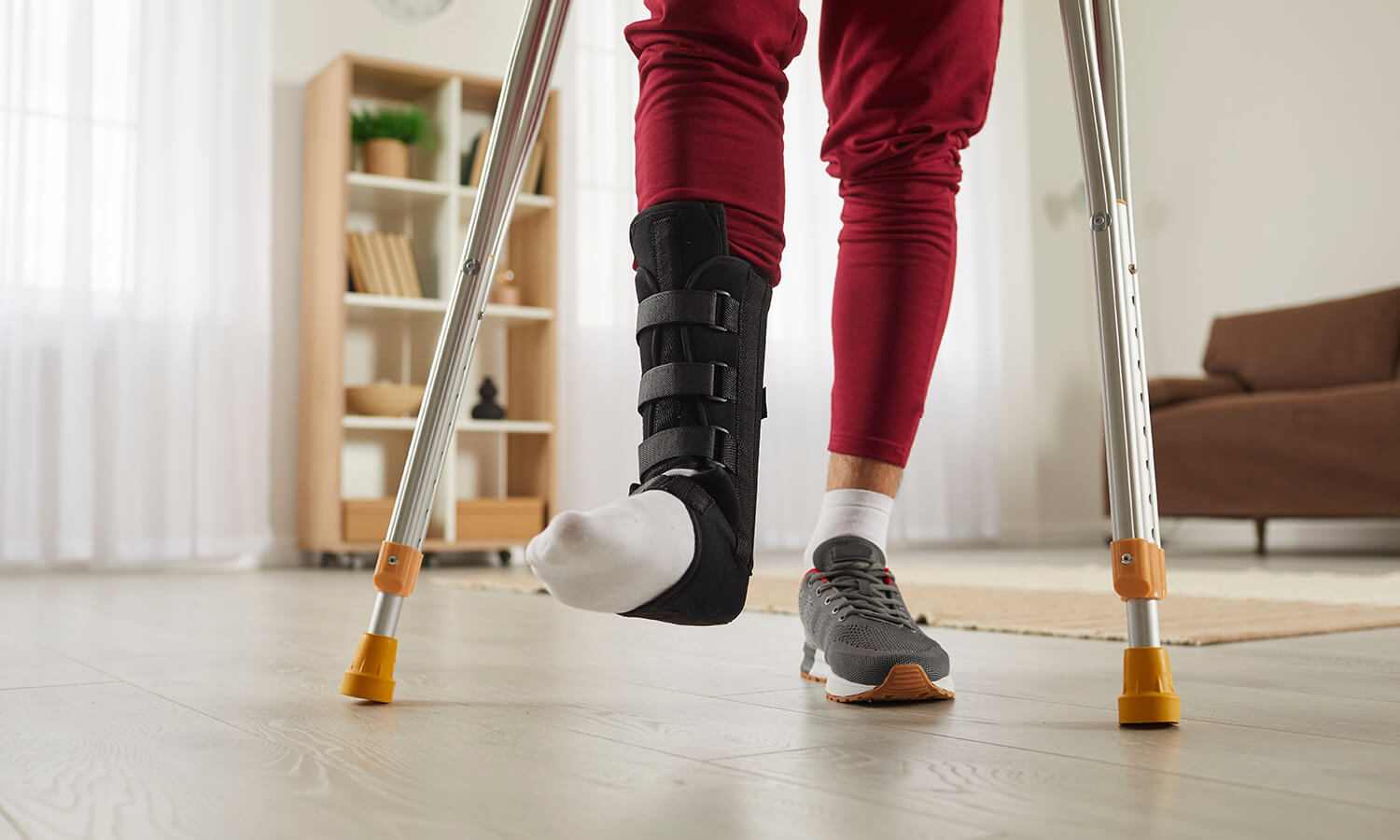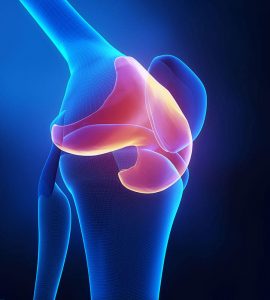Sports surgeries are commonly performed to treat serious cases of sports injuries, which can range from acute to chronic ones. Sports injuries refer to injuries sustained from trauma, such as falls, sudden twisting of the joints, or an accidental blow; or the overuse of muscles and joints.

Which Parts of the Body Commonly Sustain Sports Injuries?
Sports injuries affect the muscles, bones, tendons, ligaments, and other surrounding tissues. Common sports injuries are sprains, fractures, and dislocations, which frequently affect the following parts of the body:
- Achilles Tendon – The Achilles tendon is a thick band of tissue located at the back of the leg, connecting the muscles of the calf to the heel. This tendon is necessary for walking, running, and jumping. However, the Achilles tendon is at risk of inflammation (e.g. Achilles tendonitis) and tears (e.g. Achilles tendon rupture) due to sharp, sudden movements encountered in sports.
- Ankle – The ankle is the joint connecting the foot to the lower leg, comprising of ligaments, muscles, cartilage, nerves, and blood vessels. The ankle performs important functions, including supporting one’s body weight and movements, and maintaining balance. A sprained ankle is the most common injury affecting the ankle.
- Elbow – The elbow is the joint that connects the arm and the forearm. It is used in daily activities, such as extending the arms or reaching for objects. Some common injuries affecting the elbows are dislocations, fractures, sprains, and strains.
- Head – The head includes the skull, face, scalp, and brain. Injuries to the head may range from minor bumps to major injuries, like brain injury. The most common head injury is a concussion typically due to falls, or accidents from intense physical sports such as boxing and football.
- Knee – The knee is the joint connecting the thigh bone (femur) to the shin bone (tibia). It is necessary for supporting body weight and allowing the legs to bend and move. Common injuries involving the knee are the anterior cruciate ligament (ACL) tear, meniscus tear, and jumper’s knee.
- Shoulder – The shoulders are the joints where the collarbones (clavicle), shoulder blades (scapula), and upper-arm bones (humerus) meet. Injuries in the shoulder typically affect the muscles, tendons, and ligaments, resulting in pain and stiffness.
At Quantum Orthopaedics, we provide effective orthopaedic treatment for all types of sports injuries.
Who is at Risk of Getting Sports Injuries?
Factors that increase one’s risk of sustaining sports injuries include:
- Not warming up or stretching properly before engaging in sports
- Not practising the correct techniques in the sport
- Not wearing the proper equipment, sporting gear, or footwear
- A sudden increase in the intensity of physical activities
What are the Common Symptoms of Sports Injuries?
Some common symptoms of sports injuries include:
- Pain while moving or even at rest
- Inflammation in the affected body part
- Tenderness in the injured area
- Stiffness or limited range of motion
- Cracking or popping noise in joints
- Inability to bear weight on the foot, leg, or hip
Dr James Tan has over 10 years of experience in sports orthopaedic surgery.
For a detailed evaluation of your symptoms, please call 8028 4572 today.
How are Sports Injuries Diagnosed?
If you suspect you have a sports injury, it is recommended to visit a sports medicine specialist. During the consultation, the specialist will conduct a physical examination to assess the degree and location of pain, as well as the range of motion. Further imaging tests may also be used to confirm the diagnosis, which include:
- X-ray – This is performed to assess whether there are any broken bones or dislocated joints.
- MRI – A magnetic resonance imaging (MRI) scan is used to evaluate soft tissue injuries, such as meniscus tears, ligament ruptures, rotator cuff injuries and so on.
- CT Scan – This provides a detailed view of the bones and soft tissues using a series of X-ray images from different angles of the body, which are reconstructed into one cross-sectional image.
- Ultrasound – This can be used to assess damage in the tendons and other soft tissues (muscles, tendons, ligaments).
What is Sports Medicine?
Sports medicine is a field of medicine that deals with the diagnosis, treatment, and prevention of sports and exercise-related injuries. Sports medicine specialists, including sports surgeons, have undergone rigorous training to help patients restore their function and mobility through a wide range of treatment methods, so that they can return to their sport as soon as possible.
How are Sports Injuries Treated?
In some mild and moderate cases, the sports injury may heal through non-surgical treatments alone. However, more serious or persistent sports injuries may require surgery to effectively repair the affected bones, tendons, ligaments, or cartilage. A sports surgeon will determine the appropriate course of treatment based on the severity of the condition and the patient’s overall health and goals.
Non-Surgical Treatments
Non-surgical sports injury treatments may include:
- RICE Method – RICE stands for rest, ice, compression, and elevation. This is one of the first treatments performed to alleviate pain caused by trauma or overuse. First, allow the injured area to rest to prevent further trauma. Applying ice and compression bandages appropriately can help reduce swelling and pain.
- Medications – Pain and anti-inflammatory medications may be prescribed to aid in symptomatic treatment while the injured area heals.
- Physiotherapy – This rehabilitation programme includes a series of exercises designed to improve one’s strength and range of motion. Physiotherapy is usually recommended for patients suffering from certain cases of muscle strain, tendon injury, or ligament injury.
Sports Surgery in Singapore
In cases where the injury is serious, or non-surgical treatment did not yield much success, sports surgery may be recommended. These are performed by sports surgeons to repair damaged structures of the musculoskeletal system. Some common sports surgery procedures include:
- Rotator Cuff Repair – A rotator cuff repair procedure usually involves reattaching the tendon to the top part of the arm bone, known as the humeral head. If there is a partial tear, it might need a smoothening process called debridement. In cases of a full tear, the tendon is stitched back to its original spot on the arm bone.
- Meniscus Repair Surgery – Meniscus repair surgery is a common procedure used to remove or repair a torn meniscus, a piece of cartilage in the knee. Here, the sports surgeon will either sew the torn pieces of cartilage back together (complete tear); or he or she might just remove the damaged cartilage and retain the healthy tissue (partial tear).
- ACL Reconstruction Surgery – A torn ACL is one of the most common sports injuries. This injury can be treated with an ACL reconstruction. In this procedure, the injured ligament is replaced with a new ACL graft. This tissue can come from the patient’s own body (autograft), like the patellar tendon or hamstring, or it could be donated by another person (allograft).
Dr James Tan is skilled in performing a wide range of sports surgeries.
For personalised sports treatment, make an appointment at 8028 4572 today.
How Can One Prevent Sports Injuries?
It is essential to prepare the body before engaging in physically-demanding activities to prevent sports injuries. Try following these tips:
- Perform warm-up and cool-down exercises before and after a workout.
- Strengthen your core to improve your balance and stability.
- When working out, start slowly and intensify gradually to help your body adjust.
- Use proper and safe techniques when exercising or playing sports.
- Wear proper gear and footwear that provide enough support.
- Avoid overexertion, take some rest if you feel exhausted or experience pain.
- Get a check-up with an orthopaedic specialist prior to starting a new form of sport
When to Consult a Sports Surgeon in Singapore?
While typical aches following strenuous physical activities typically disappear after a few days of proper rest, some may persist, or are accompanied by other symptoms. It is recommended that you see a qualified sports surgeon if you notice any of these:
- Difficulty performing daily activities
- Persistent or chronic pain
- Limited range of motion
- Instability standing or walking
- Ankle or wrist sprain that has not improved in 48 hours
Let’s walk the path to recovery together.
Contact us at 8028 4572 and embark on a treatment specially tailored for you.
When Can I Return to Sports after Surgery?
The recovery period after a sports surgery depends on the severity of the injury to begin with, the type of surgery performed, and the patient’s natural healing process. Typically, athletes may return to playing sports after completing physiotherapy and have been cleared by their doctor to resume sports.
Here is the average recovery period per type of sports surgery before the patient regains full function in the formerly-injured area:
- Meniscus repair – Five and a half months
- ACL reconstruction – Nine to twelve months at a minimum
- Rotator cuff surgery – Four to six months
- Achilles tendon surgery – Six months
- Arthroscopic surgery – Six to eight weeks
Sports surgeries come in many forms and should be tailored to the individual for optimal outcomes. For more information, make an appointment with our sports surgeon at 8028 4572 today.

- Bachelor of Medicine, Bachelor of Surgery (Singapore)
- Member of the Royal College of Surgeons (Edinburgh)
- Master of Medicine in Orthopaedic Surgery
- Fellow of the Royal College of Surgeons in Orthopaedics and Trauma (Edinburgh)
Dr James Tan is a fellowship-trained orthopaedic surgeon in Singapore with over a decade of experience in knee surgery, sports surgery and exercise medicine. He has treated elite athletes, including national team members and professional footballers.
With advanced training from the Technical University of Munich, Dr Tan specialises in knee, shoulder, and elbow injuries, cartilage and meniscus repair, and minimally invasive tendon and ligament surgery. Actively involved in research and education, he has led tissue engineering projects and served as Adjunct Assistant Professor at both NUS and NTU medical schools.




